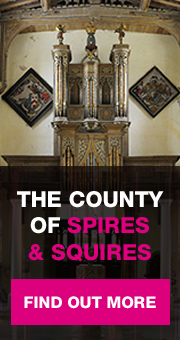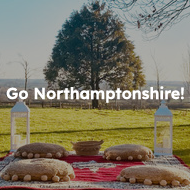The ancient village centre stands above the flood plain of the river Nene. This now lies at the far end of the village which grew considerably in the late 19th century when the local iron ore was extracted in an industrial scale. The church itself gives no hint of this beyond it’s fine wrought iron regency gates. Instead it still speaks of its complex medieval evolution which resulted, by the 15th century, in one of the most fascinating and charming medieval buildings in the county.
This evolution remains something of a puzzle and you will enjoy working out what was built when. The only exception to this is the chancel which was subject to new and rich decorative detailing by John Fowler of Louth, 1865 – 6. There are few other later surprises such as the painted reredos in the north chapel, 1926. Here you will also find oak effigies from the 14th century of a knight and his lady.
In the south aisle you will encounter a later marble memorial to the Rt. Hon. Charles Arbuthnot by Skelton of York. He was our ambassador in Constantinople during the middle years of the Napoleonic Wars, 1804 – 1807.
He and his second wife later became close friends of the Duke of Wellington and lived with him at Apsley House when they were in London. It was he who built the remarkable Waterloo Victory Round House that still stands on the main road from Finedon to Islip near Woodford. It is both recognition of their friendship and that the duke said that the open landscape reminded him of the battlefield.
Please refer to the Glossary for any terms in the text that you are unfamiliar with.







